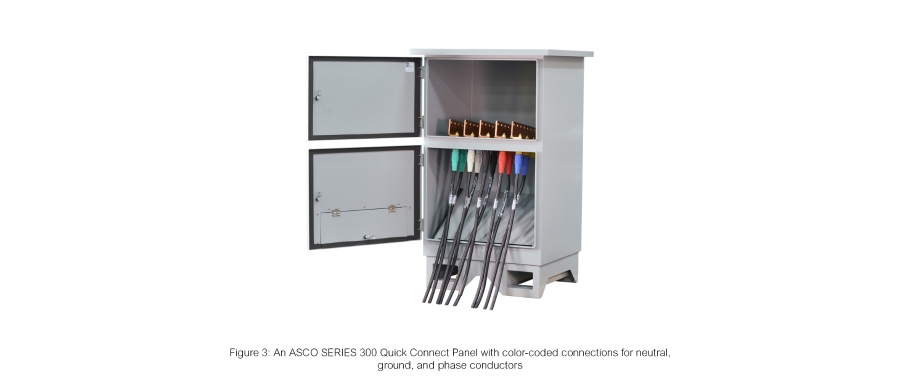When connecting a portable or temporary generator to backup three-phase power, connections are often made through a quick connect panel and a manual transfer switch. In doing so it’s important to connect each genset conductor to the corresponding conductor of a building’s power distribution system to avoid unintended performance impacts and potential equipment damage. The following narrative provides an overview.
Phase Sequence
Three-phase power distribution systems typically rely on three phase conductors, a neutral conductor, and a grounding conductor. When connecting power sources and loads, both must use the same phase sequence, which refers to the order in which each phase reaches peak voltage during an alternating current cycle. Figure 1 applies to three-phase generators and motors, and shows an ABC phase sequence and the resulting sine waves.
Phase Sequence
Three-phase power distribution systems typically rely on three phase conductors, a neutral conductor, and a grounding conductor. When connecting power sources and loads, both must use the same phase sequence, which refers to the order in which each phase reaches peak voltage during an alternating current cycle. Figure 1 applies to three-phase generators and motors, and shows an ABC phase sequence and the resulting sine waves.





